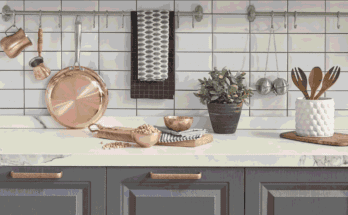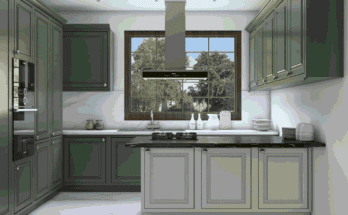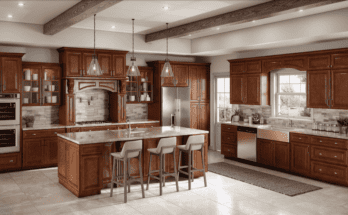1. Introduction
When considering the functional and aesthetic beauty of the kitchen, some important detail rarely given adequate treatment is the height of the kitchen shelves. One should, therefore, keenly consider this factor since it determines the appearance and practical use of the kitchen. Standing in front of the kitchen and cooking, whether as an expert or as a weekend cook, the height of your kitchen shelves matters so much. In this article, the reader will find out about the optimal height of the shelf in the kitchen, the factors that determine it, as well as recommendations from specialists and real-life examples.
2. Understanding Kitchen Shelf Height
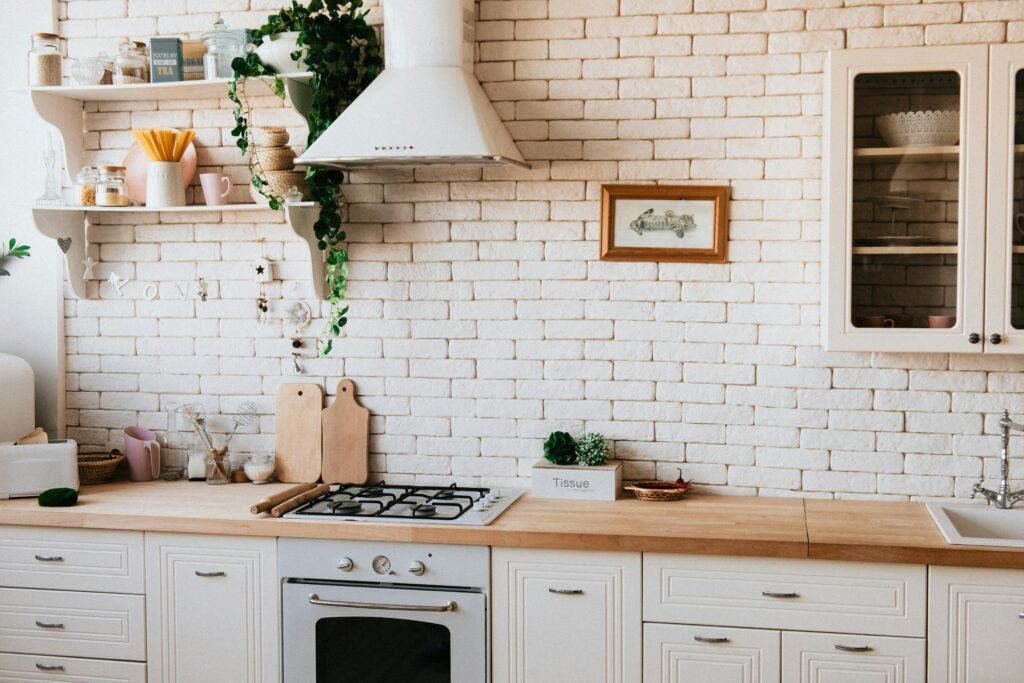
Definition and Significance
Kitchen shelf height can be defined as the distance between the floor level and the top or bottom of kitchen shelves. This measurement is important since it has a tangible impact that leads to its reflection in the degree of accessibility, comfort, and safety.
Shelves that are set too high are difficult to access, and cabinets that are placed too low require constant bending, which causes strain. In addition to being uncomfortable, in the long run, it can also lead to injuries.
Common Measurements and Standards
Most designers and homeowners use industry standards for kitchen shelf dimensions.
For example, the bottom base cabinets are fixed in the working height area, and the bottom edge is 34 to 36 inches above the ground, while the top cabinets are placed 54 inches above the ground, which is the normal eye-level height.
Shelves, exposed and with an open construction, an emblem of modern construction, are ordinarily installed 18 inches from the countertop.
3. Factors Influencing Kitchen Shelf Height
Height of Household Members
In determining the right height for a kitchen shelf, it is important to consider the height of the most frequent users since it differs from one case to another. A big person may require high shelves because he or she does not have to bend, while a small person may require low shelves because they do not have to stretch.
Type of Kitchen Use
Other activities that take place in a kitchen also determine the appropriate height of the shelf. For instance, a special kitchen for baking requires low shelves where large and heavy necessary tools and dishes like bowls can be placed easily and safely. A luxurious cooking spot requires different heights for spices, tools, and other necessary casseroles, pans, and many others.
Ergonomics and Accessibility
Therefore, it is crucial to consider ergonomics when deciding the appropriate kitchen shelf height. The goal is to achieve the least level of stress and the most productivity in the layout’s positioning.
There is a need for high accessibility since people with impaired movement, those with elderly people in households, or the elderly people themselves might not have the strength or ability to climb high structures or bend low to get products on low shelves.
4. Ideal Kitchen Shelf Height by Type
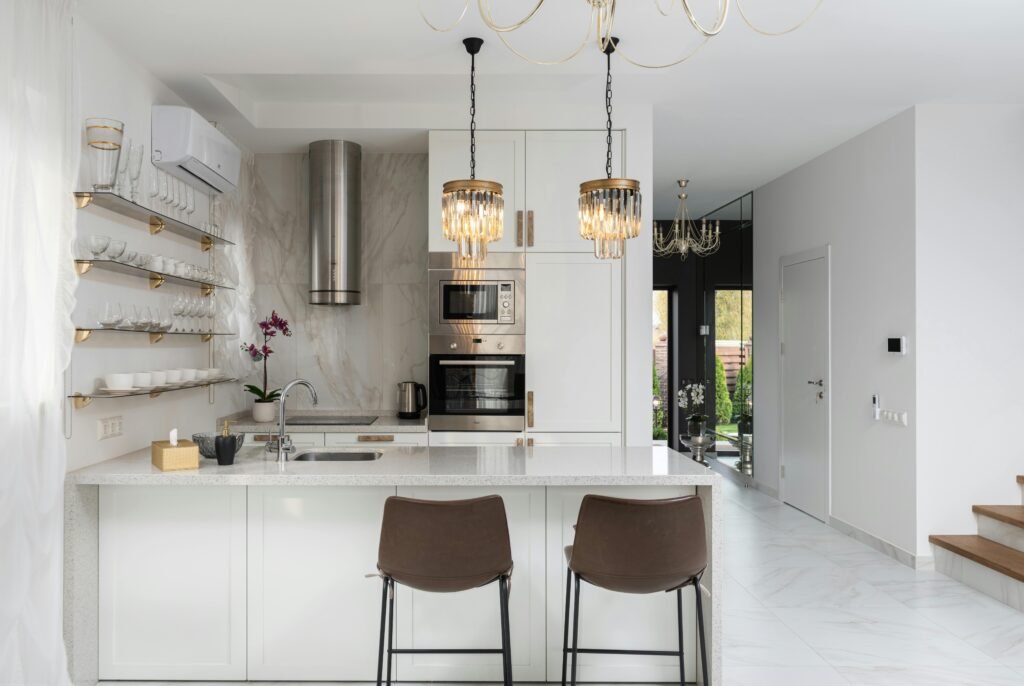
Upper Cabinets
Normally, upper cabinets are placed higher to provide easy access to the most used items while keeping them concealed. The common height of the base is approximately 54 above the floor level to the bottom part of the taller storage areas. But in case some changes are required, they are possible to make depending on the client’s demands and kitchen layout.
Lower Cabinets
Ideally, the lower cabinets should be low enough so that items stored on their shelves do not need to be retrieved with frequent bending that strains the back. A standard one is 34 to 36 inches, which matches most of the countertop heights. It is an optimal height to perform operations commonly done where one must stand, such as chopping and mixing.
Open Shelving
Open shelving can also be easily combined with the height of the equipment: the kitchen can have different designs, and a homeowner may find open shelves highly useful. Generally, the first level is installed about 18 inches above the countertop, and the other levels are at such a distance as will accommodate the articles to be stored.
Overhead or Ceiling-Mounted Shelves
These shelves are perfect for items that are used rarely during the working week. Nevertheless, they should be installed in the right manner so that they do not hinder vision or even make the kitchen look congested. The rule of thumb for spacing shelves is that at least the top shelf should be reachable without a stool, especially in a house with small children.
5. Measuring for Kitchen Shelf Installation
Tools and Equipment Needed
There is also a need to have the necessary tools when installing the shelves, some that may include a measuring tape, a level, and a pencil to mark on the walls and a drill or screw to fix the kitchen shelves. Other personal protection equipment, such as goggles and gloves for protection purposes, is also required.
Step-by-Step Measuring Guide
- Determine the Desired Height: Decide the best height based on the factors discussed earlier.
- Mark the Height on the Wall: Use a pencil to mark where the shelves will go.
- Use a Level: Ensure the marks even use a level to prevent crooked installation.
- Measure Twice, Drill Once: Double-check all measurements before drilling to avoid mistakes.
6. Kitchen Shelf Height for Different Need
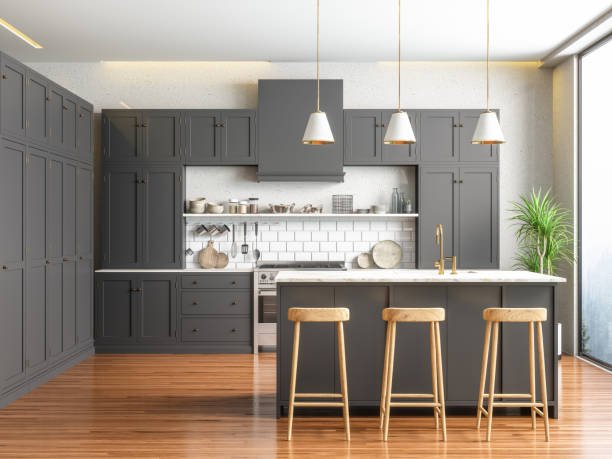
For Taller Individuals
For taller people, placing shelves a bit higher than the usual standards will ensure that one does not have to bend or stoop too much. An example is adjustable shelves, whereby changes are made depending on the current needs.
For Shorter Individuals
It is also good to consider the heights of the people in the house and provide shorter heights for the short people in the house so that they can move through the house without having to draw a step stool to reach for items on the shelves. Other types of mobile shelving that may be useful include pull-down shelf units.
For Wheelchair Accessibility
When selecting the kind of kitchen to install for wheelchair users, it is suggested that the upper cabinets be made lower and pull-out shelves installed in the lower cabinets. It would be most suitable to consider the shelf height that will be comfortable for the person to reach with his or her arms and the degree of his or her movement limitation.
7. Adjusting Kitchen Shelf Height
Tips for Adjustable Shelving
The best thing about these configurations is that the shelves are adjustable for height. This is especially good in families where the height of users and or those using them differs one from the other, especially in the kitchen.
Using Shelf Risers or Inserts
Other additional structures, such as shelf risers or inserts, can assist in better using a particular story, offering more space per area. That can come in handy, particularly if you have a small cooking preparation space with little to no counter space for storage.
Customizable Shelf Options
Shelves can be as general or specific as the need they are going to fulfill; for example, depending on where they are installed, they may even be made to fit odd-shaped or odd-sized objects. This is useful in maximizing the utilization of the available space without being congested by packing the kitchen shelves.
8. Common Mistakes in Setting Shelf Height
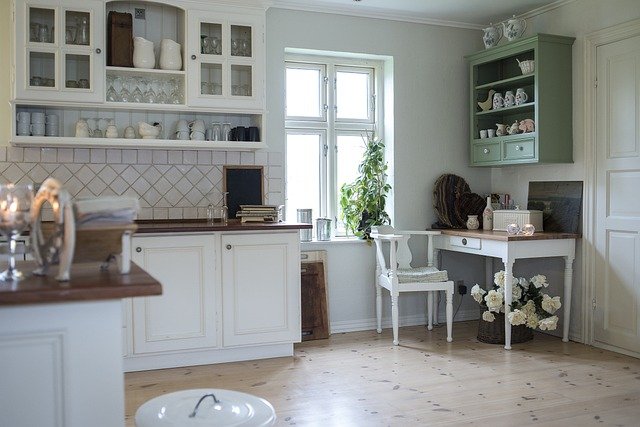
Overlooking Ergonomic Considerations
One of the most frequent pitfalls is not paying sufficient attention to the ergonomics of the workplace, which might cause pain and even chronic trauma. Great care should be taken when designing a kitchen to reduce the level of strain on the body parts, especially the back.
Ignoring Future Needs and Trends
Like all other industries, household needs also evolve, and so do kitchen designs. The future should also be taken into account, depending on the needs of family members, budget, and tendencies in construction and design.
Choosing Style Over Functionality
Form and style should not matter so much if there is beauty because form and style mean functionality. Well, you may have beautiful shelves that do not fit well or are not easy to use, and this will immediately cause problems in the kitchen.
9. Expert Insights on Kitchen Shelf Height
Quotes from Interior Designers and ergonomic Experts
Interior designers often emphasize the importance of customizing kitchen shelf height to the user’s needs. “A well-designed kitchen is one where the shelves are placed considering both function and aesthetics,” says a renowned kitchen designer, Sarah Johnson.
Case Studies on Optimal Kitchen Layouts
Kitchens designed with ergonomic considerations have recently been observed to be more user-friendly and do not cause strain or injuries. Such kitchens can have moveable or sliding shelves, and optimum storage trimming should be given a precise idea.
10. Practical Applications
DIY Shelf Installation Tips
Constructing kitchen shelves in DIY form is one of the best DIY home improvement projects you will encounter. It is wise to have guidelines to avoid making mistakes and use the correct tools when doing the job.
Creative Storage Solutions Using Shelves
Shelves are an amazing tool when you need to make the most of your kitchen space. For instance, consider corner shelves or pull-out racks for areas that are not used regularly for storage. They increase the amount of storage space while also adding a distinct look to the kitchen.
11. Future Trends in Kitchen Shelf Design
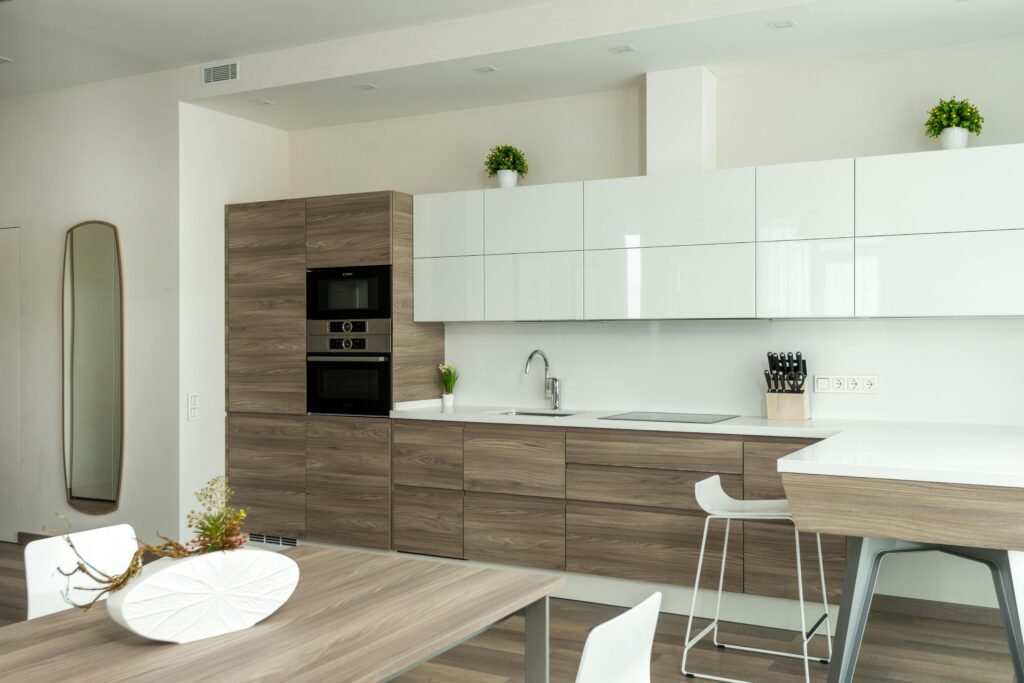
Smart Shelving Systems
Consequently, more and more people are now adopting smart home shelving systems. These systems are convenient because they can be operated with a remote or app.
Modular and Adjustable Shelving Units
Even flexible and movable modular shelves, which are commonly used in kitchen design, are quickly finding their way to the market. This is especially the case when space is limited, as in most modern Australian homes with small kitchens.
Sustainable Materials for Shelves
With the emergence of a renewed interest in sustainability or the use of sustainable materials in homes, among other things, and given that kitchen shelves are one of the most easily visible areas in the home, it is also possible to find bamboo or recycled wood in this part of the home.
12. Conclusion
Therefore, the best kitchen shelf height best suits the kitchen’s needs while also being aesthetically pleasing. Several elements, which include the height of the other members in the household, frequency of use of the kitchen, and ergonomics of your current and future state, should also be considered. When mounting those new shelves or tweaking the previously used ones, always ensure you get the correct measurements, consider the other aspects that may come in the future, and carefully choose the most durable materials.
13. FAQs
[saswp_tiny_multiple_faq headline-0=”h3″ question-0=”What is the standard height for kitchen upper cabinets?” answer-0=”The standard height for upper cabinets is typically 54 inches from the floor to the bottom of the cabinets, aligning with the average eye level. ” image-0=”” headline-1=”h3″ question-1=”How high should kitchen shelves be for taller individuals?” answer-1=” For taller individuals, kitchen shelves should be slightly higher than the standard, ensuring easy access without the need for constant bending.” image-1=”” headline-2=”h3″ question-2=”Can kitchen shelves be adjusted after installation?” answer-2=”Yes, many modern shelving systems are adjustable, allowing for changes in height as needed.” image-2=”” count=”3″ html=”true”]


